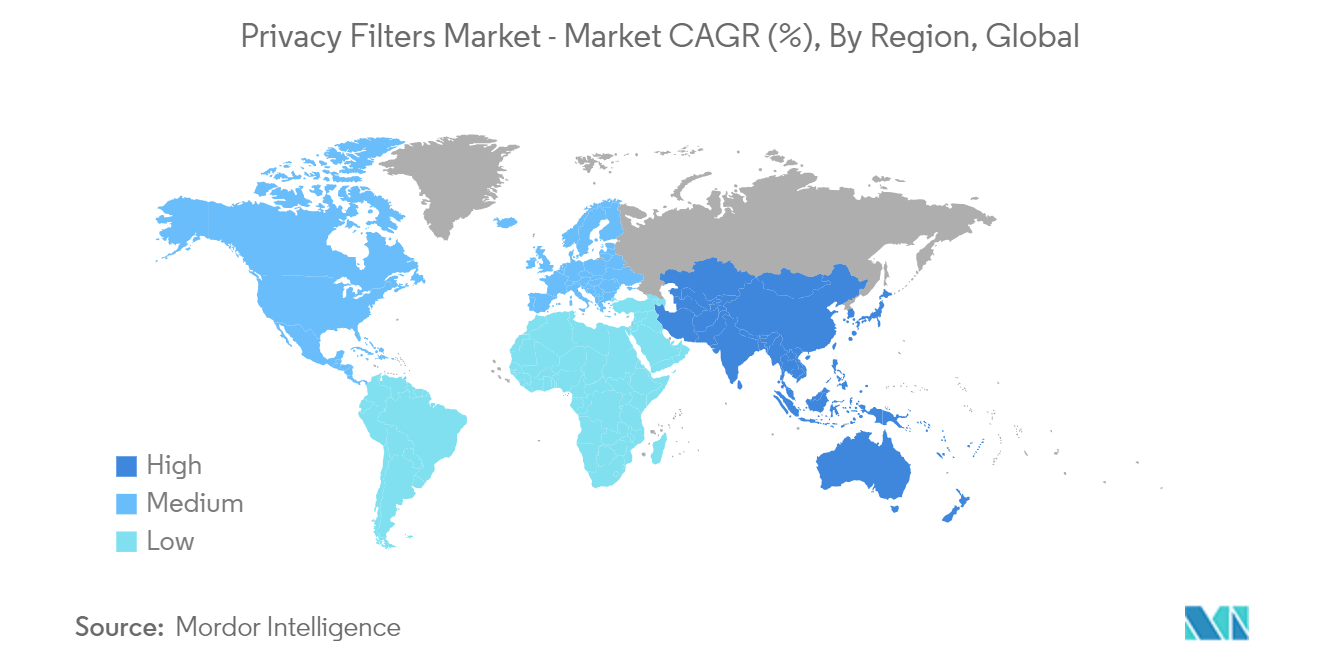Market Trends of Privacy Filters Industry
Financial Institutions Are Expected to Hold a Major Share
- The need for electronic filters will grow significantly in financial institutions over the coming years. With rising customer security sensitivity, growing data breaches, and an increasingly complex legal and regulatory environment, consumer data needs to be protected while stored, transferred, and viewed. Consumer data protection and internal financial statements are becoming essential in financial institutions, driving the need for electronic filters.
- Financial institutions are continuously discovering new ways to use and access data to rescue customers and the company, serve customers better, and find new revenue sources. In this new era, bankers have greater customer data access than ever.
- However, as this data lake widens, critical privacy issues arise, and visual privacy becomes increasingly difficult to control. Electronic filters offer visual privacy to protect data, thus finding significant applications in financial institutions. According to Kroll's data, the finance sector recorded 27% of data breaches in 2023, compared to 19% in 2022. Thus, companies invest in data protection to prevent data exploitations.
- Banks and other financial institutions worldwide are under increasing scrutiny to ensure they have the appropriate security measures in place, especially in the wake of the numerous high-profile data breaches that have occurred over the past few years. Privacy filters are ideal for adding security to personal and confidential information on a computer display.
- Further, to remain compliant with data protection regulations and protect sensitive financial data, banks and financial institutions ensure visual privacy in several key areas. Various market vendors, such as 3M, are capitalizing on this opportunity and offering filters that provide visual privacy on monitors, laptops, and mobile devices, preventing sensitive client, customer, and financial organization data from being exposed to visual hackers.

Asia-Pacific is Expected to Register the Fastest Growth
- The growth in globalization has increased the focus on existing data privacy rules across Asia-Pacific. Over the past year, several Asian nations amended, released, or reviewed their data privacy regulations and frameworks.
- In addition to cyber hacking, visual hacking has increased, where hackers capture data using cameras. Hackers can quickly obtain sensitive information from a computer or tablet screen simply by capturing an image of the screen. It has become a significant concern, especially in developing countries like China, India, Sri Lanka, Korea, and other Southeast Asian nations. Physicians collect more than health information in healthcare. Healthcare professionals should be conscientious when dealing with personal and financial information, such as social security numbers.
- Furthermore, countries like China, Korea, Japan, and Taiwan are critical laptop and smartphone manufacturers. Smartphones are a primary catalyst behind Asia's digital growth, connecting millions, launching social networks at scale, and spurring e-commerce and large-scale digital transactions.
- The sales volume of smartphone manufacturing in Southeast Asian countries has been on an upward trend in recent years, especially in Thailand and Vietnam, where continued economic growth has contributed to the rapid development of smartphone manufacturing sales volume.
- The support for 5G expansion is increasing, which is expected to eventually boost market growth in the region. Telecom regulatory bodies and government authorities in South Korea, Japan, Australia, China, and Taiwan have launched national 5G strategies or action plans, sharing the vision and guidelines to establish 5G ecosystems.
- These regulations are boosting the growth of smartphones. With more smartphones, the demand for privacy filters is also increasing as most of the critical data and information are available nowadays on these devices.


